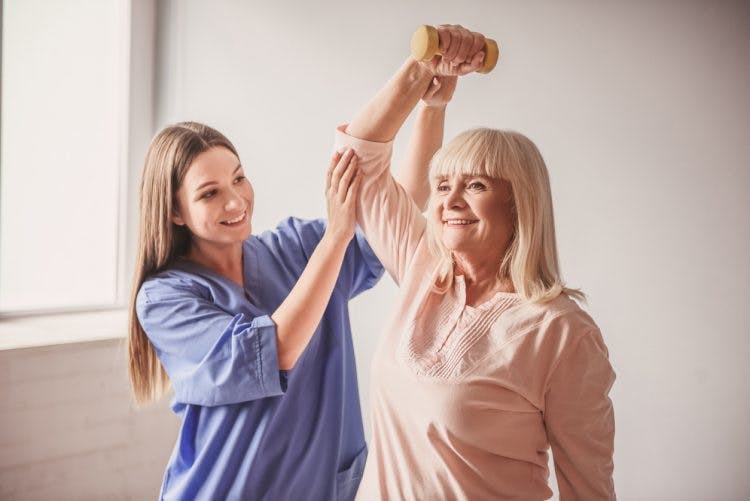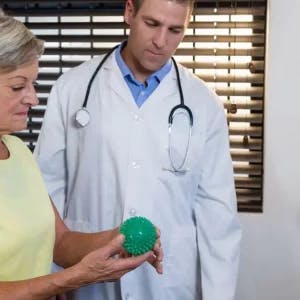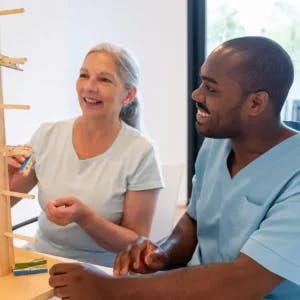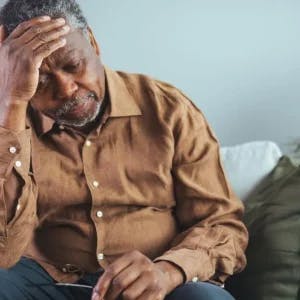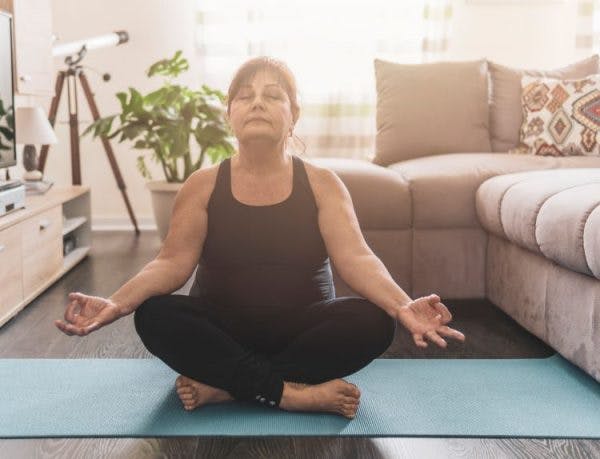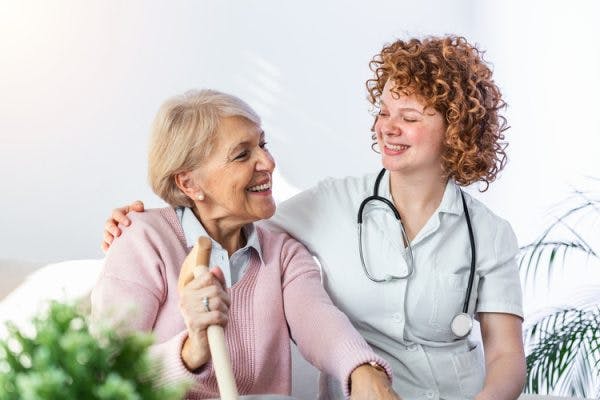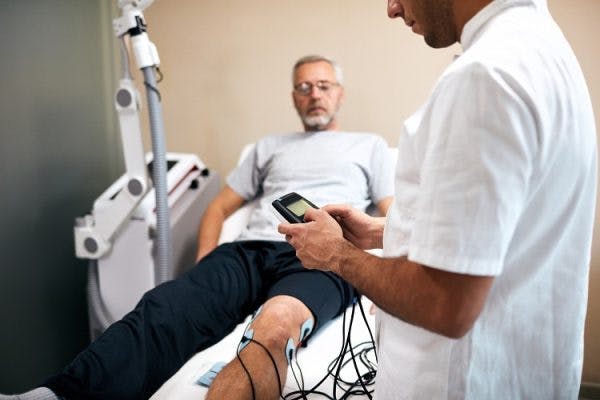Can you full recover from a stroke? Many survivors and caregivers find themselves asking this very question. Accurately predicting the outcomes of a stroke can be challenging because every stroke is different and therefore every survivor’s recovery process is different. While it is impossible to predict who will recover completely, there are ways to maximize one’s chances of a full recovery.
This article will explore the definition of full stroke recovery and discuss whether you can fully recover from a stroke. Additionally, recommendations for how survivors can optimize their recovery from stroke will be outlined. A review of recent studies focused on achieving a full recovery is also included. Feel free to use the links below to jump directly to any section of this article.
- Defining a full recovery from stroke
- Factors that may promote a full stroke recovery
- How to achieve a full recovery from stroke
- Evidence-based examples of a full stroke recovery
Defining a Full Recovery from Stroke
A stroke occurs when the blood supply to the brain becomes comprised, causing affected portions of the brain to become damaged. This damage leads to a number of physical, cognitive, emotional, and/or behavioral secondary effects associated with the area of the brain that sustained damage.
Depending on the secondary effects of stroke, survivors may have many different goals during rehabilitation. However, there is one common goal that all survivors seem to share: to get back to their normal selves. In fact, the definition of recovery is “a return to a normal state of health, mind, or strength.”
Each individual may have different components of recovery that they may prioritize. For some, a full motor recovery is most important, while others may strive for a full cognitive recovery.
Still others may pursue a full functional recovery from stroke. This entails being able to do everything that they were able to before their stroke, even if they may not have gained back 100% of their previous abilities. Survivors who have achieved a full functional recovery may perform some tasks differently, employing compensatory techniques in order to function independently.
The path to recovery looks different for every stroke survivor. While no doctor or therapist can promise a complete recovery, it is important to set ambitious yet realistic goals.
Factors That May Promote a Full Recovery
How close can you get to a full recovery from stroke? While every stroke is different, there are some common factors amongst those who achieve the highest levels of recovery. Factors that may promote favorable recovery outcomes include:
- Prompt stroke identification and medical treatment: When a stroke occurs, each moment of delay can result in more severe damage. Therefore, it is essential to know the warning signs of stroke and seek emergency medical treatment immediately to limit brain damage and promote an optimal recovery.
- Lower stroke severity: Survivors who have sustained mild strokes have less severe secondary effects than survivors of severe strokes, thus achieve a full recovery more readily.
- Early participation in intensive rehabilitation: During the first 3 months after a stroke, the brain enters a heightened state of neuroplasticity, meaning it has the potential to adapt and recover more quickly. Following this period, many survivors experience a plateau, where progress may slow. However, survivors can continue to progress months to even years after their stroke.
While these factors are beneficial for those working toward a full recovery from stroke, they are not essential. Even those with who have experienced a more severe stroke or are decades past when their stroke occurred have hope for recovery. Persistently pursuing rehabilitation, finding internal motivation to push forward, and keeping a positive attitude are also excellent ways enhance one’s recovery outcomes.
How to Achieve an Optimal Recovery from Stroke
Stroke diagnosis and treatment options are constantly advancing. With today’s technology, more and more survivors are achieving higher stroke recovery outcomes. While not everyone will fully recover from stroke, here are three steps survivors can take to achieve their highest possible recovery:
1. Find Motivating and Effective Stroke Rehabilitation Methods
There are a wide variety of stroke rehabilitation techniques that may benefit survivors. To maximize chances of recovery, it is important to consider and try out different techniques to find an effective option. Physical, occupational or speech therapists can be great resources for learning which techniques may be most effective for a survivor’s specific situation.
Some individuals find routinely practicing a set of exercises to be most motivating path toward recovery, while others prefer to integrate therapeutic activities into their rehabilitation regimen.
Gamified technological tools, such as FitMi Home Therapy, the Music Glove, or the CT Speech and Cognitive Therapy App, are often very motivating for survivors. These types of rehabilitation tools have the added benefit of being able to adapt to the user’s personal skill level to provide a perfect challenge.
Just as every stroke is unique, there are no “one size fits all” stroke treatments. Finding effective treatment techniques, and modifying or changing these techniques as needed, can help survivors obtain an optimal recovery.
2. Be Mindful of Compensation Techniques
To maximize the chances of recovery, survivors need to stay mindful of the difference between compensation and recovery. Compensation involves performing an old movement in a new manner. Recovery involves restoring the ability to perform a movement in the same manner as it was performed before injury.
For example, if a survivor’s dominant hand became impaired after stroke, recovery would involve working diligently at hand rehabilitation to effectively eat using the dominant hand. Alternatively, compensation could entail learning to eat with the non-dominant hand or using adaptive silverware.
This doesn’t mean that compensation techniques should never be used. Compensatory aids like canes and walkers are necessary for safety, especially in the early stages of recovery. Other equipment, such as a sock aide or adaptive keyboard, can help individuals achieve independence and a full functional recovery, even if they have not completely recovered all of their affected skills.
While it is ideal to fully recover and function without having to use compensatory techniques, employing compensation as needed can provide a stepping stone toward recovery. Furthermore, as individuals continue to progress, they may find that they no longer need to rely on compensation, but can resume performing activities as they had before their stroke.
3. Use High Repetition to Promote Recovery from Stroke
While a few individuals are fortunate enough to spontaneously recover from stroke, typically the most effective way for survivors to reach their full potential during stroke recovery is to focus on activating neuroplasticity. This is the mechanism the brain uses to rewire itself, allowing healthy areas of the brain to assume control over functions previously housed in damaged areas.
Neuroplasticity is activated by repetition. Therefore, consistently and repetitively practicing tasks involving affected functions can promote adaptive changes in the brain, potentially leading to a full recovery.
Focusing on rehabilitation is essential for making a full recovery from stroke. Keeping a recovery journal while consistently working toward recovery can help survivors see results and stay motivated to continue progressing toward a full recovery.
Evidence-Based Examples of a Full Recovery from Stroke
The reported percentage of survivors achieving a full recovery from stroke varies. Some studies report only 15% fully recover from conditions such as paresis (muscles weakness), while others find between 25 and 50% of individuals gain a nearly full recovery. Reasons for this variation include the use of different assessment methods to determine recovery outcomes, as well as differing perspectives from survivors and clinicians on whether a full recovery is achieved.
Researchers are continuing to find new ways to promote a full recovery from stroke. While some may achieve a full recovery through conventional rehabilitation methods, more promising techniques are continuing to be studied.
Here are a few examples of studies looking at the possibility of a full stroke recovery:
- A 2013 study focused on the outcomes of over 300 stroke survivors found that one year after stroke, 25% of survivors could function independently. While only 13% of survivors could return to their jobs, half of them were able to work full time.
- A 2021 study examining the walking abilities of 2,100 stroke survivors found that 75% of survivors achieved full recovery of independent walking by 3 months post-stroke. Furthermore, the median amount of time to walk unassisted after stroke was only 6 days. This study did not take into account other areas of recovery.
- Another 2021 study focused on predicting cognitive recovery outcomes among 135 survivors found that 30% of survivors experienced a full cognitive recovery after one year. However, this study only examined cognitive recovery outcomes, and did not investigate motor recovery.
- A 2022 case study regarding a 53 year old male demonstrated that, with persistent involvement in rehabilitation, full recovery from stroke is possible even years following the incident. The subject of the study experienced hemiplegia (one-sided paralysis on the right side of his body). He recovered full right leg function at three months post-stroke. However, he did not start recovering right arm function until 2 years after his stroke, and continued progressing to full recovery at 12 years post-stroke. Of note, although he made a full motor recovery, he did continue to have some speech difficulties at the time of the study’s publication.
- A study presented at the 13th World Stroke Conference in 2021 found that using artificial intelligence (AI) can significantly improve stroke outcomes. Brainomix, the AI used in the study, focused on assessing medical imaging to identify appropriate treatments for stroke patients upon their arrival to the hospital. Since Brainomix was able to improve initial stroke treatment times, its use also resulted in a great improvement in functional outcomes. With the help of Brainomix’s technology, 48% of survivors achieved a full functional recovery, as opposed to only 16% before the use of AI.
With the results of these studies in mind, it is increasingly possible to achieve a full recovery from stroke. Although results are not guaranteed, many survivors are able to make excellent gains and successfully reach their full recovery potential.
Stepping Closer to a Full Recovery from Stroke
The focus of this article was to provide clarity for survivors wondering whether you can fully recover from a stroke. According to the research, many individuals are able to make a full stroke recovery by using conventional therapy techniques and incorporating new treatments as necessary.
A full recovery can take on different meanings to different people. While some survivors feel that a full recovery refers to being able to participate in everyday life using compensatory techniques as needed, others strive for a true recovery of all affected functions. By pursuing rehabilitation consistently, using motivating and engaging treatment techniques, survivors are likely to reach their full recovery potential.

